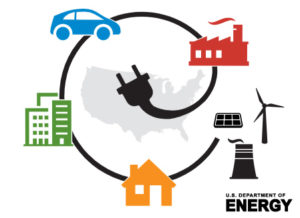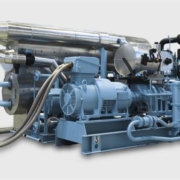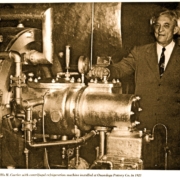The Blog
Electrification of Buildings: Is This the Future?
 To reach aggressive decarbonization goals at state and municipal levels, fossil fuel combustion must be replaced in part through electrification of buildings. What this means is substituting space and water heating/cooling fossil fuel technologies with electric technologies. The interest in electrification is a trending topic in energy efficiency and decarbonization at the commercial, industrial, and residential levels, and a primary component of the Green New Deal.
To reach aggressive decarbonization goals at state and municipal levels, fossil fuel combustion must be replaced in part through electrification of buildings. What this means is substituting space and water heating/cooling fossil fuel technologies with electric technologies. The interest in electrification is a trending topic in energy efficiency and decarbonization at the commercial, industrial, and residential levels, and a primary component of the Green New Deal.
The Green New Deal may be a polarizing topic, but the implementation of electrification on a broad scale would have profound effects on energy markets. Electric grids continue to transition to renewables; therefore, as more consumers transition to heating and cooling from the grid, instead of from oil or gas-fired boilers, carbon emissions will fall—and continue to fall as the grid reduces its carbon intensity.
Electrification may provide other benefits to the nation’s energy system, such as “greater flexibility for managing electric loads, opportunities to provide additional ancillary services to the grid, and valuable synergies with electric vehicles, demand response, and distributed generation and energy storage.” With a grid that has more electrified end uses and greater control over those end uses, a utility can exercise greater control over the shape of the load on the grid, balance the grid in real time, and implement more nuanced demand response. Similarly, newly electrified end uses linked to controls and monitoring can be treated as “smart loads” to be used for demand response and shifting, providing more flexibility to a grid that has more renewables and a greater need for flexibility.
The “ultimate barriers” to electrification are not technical, but economic, and this is especially true in existing buildings. While the electrification of end uses such as space and water heating can be relatively cost-effective in new buildings, the up-front capital costs and project complexity can be a barrier to electrification of existing buildings. Fortunately, with programs such as RENEW’s third-party funding Energy Services Agreement, commercial and industrial energy users can become efficient and reach aggressive decarbonization goals regardless of policy. In addition, electrification could generate cost savings, making retrofits for existing buildings an attractive investment. Initial studies suggest there could be energy savings in certain regions and certain projects, such as replacing fuel oil heaters in the Northeast.










